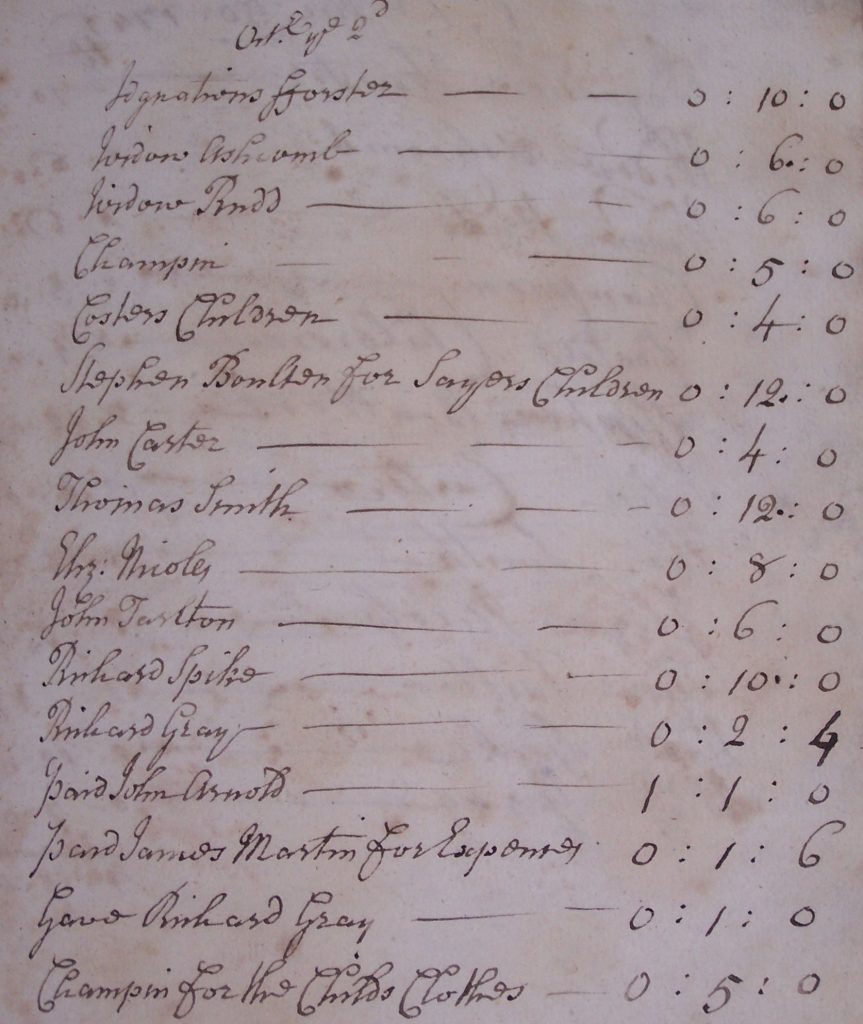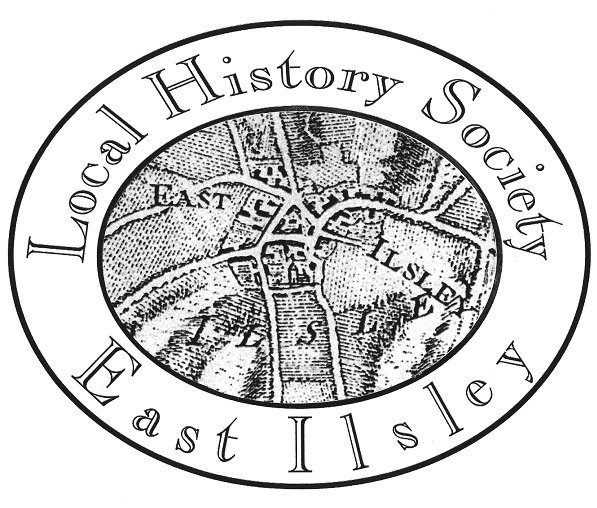Poor Law Records
East Ilsley is particularly lucky in that a full set of detailed Overseers’ accounts survive covering the period from 1744 to 1796. There is an on-going project to transcribe all of the surviving Poor Law records from the 18th century – these include detailed overseers’ accounts (as in the example below), summaries of the amounts paid out and taken in as poor rate, and a rate listing all of the people who paid into the scheme.
Records of the Poor Law are particularly valuable in looking at the lives of people like agricultural labourers, who leave few other records of their lives. During the 18th century, the Poor Law effectively was the locally administered welfare system. Widows and orphans, the elderly and the sick were all supported by the local poor rate if they had no other form of income. In cases such as orphans or the elderly, this takes the form of regular payments in cash and occasional payments in kind, e.g. clothing. Ad hoc payments and payments for work (repairing the roads, for example) were often made to labourers during the winter months when they had insufficient work to feed their families.
The first book of accounts was found by chance in the parish chest in St Mary’s church in 2007. Each page was photographed for transcribing, and has now been deposited in the Berks record office. The remaining 3 books are in the record office (ref. DP 74/12/1-4) and accessible only via microfiche copies, which are being used for the transcriptions.
Three books of overseers’ accounts are now available to view/download, covering the periods 1744-1752 (Book 1), 1752-1760 (Book 2) and 1760-1770 (Book 3). The remaining book is in the process of transcription and will be uploaded here when completed. This last book covering 1770 to 1796 is much larger than the earlier books – approximately half has been transcribed so far.
Extract from the Overseers’ accounts for Oct 2nd 1748 (all sums are in £-s-d)

Ignatious Foster 0-10-0
Widow Ashcomb 0-6-0
Widow Rudd 0-6-0
Champin 0-5-0
Costers Children 0-4-0
Stephen Boulten for Sayers Children 0-12-0
John Carter 0-4-0
Thomas Smith 0-12-0
Eliz. Nicolls 0-8-0
John Tarlton 0-6-0
Richard Spike 0-10-0
Richard Gray 0-2-4
Paid John Arnold 1-1-0
Paid James Martin for Expenses 0-1-6
Gave Richard Gray 0-1-0
Champin for the Childs Clothes 0-5-0
Notes on some of these entries:
- Ignatious Foster was a widower in his 80’s, whose wife had recently died (her funeral expenses also appear in the accounts)
- Widow Ashcomb and widow Rudd received regular payments of 6s per month
- Stephen Boulton married a widow (Frances Sayer) with 6 young children – these payments are for looking after the widow’s children
- Richard Gray was probably a labourer, receiving occasional payments
The Overseers’ accounts books also give us an insight into events affecting the whole village. For example, in 1753 there was a smallpox epidemic in E. Ilsley, which resulted in the death of about 20 people and probably affecting 50-60 people. A detailed summary of the epidemic is available in the download section below.
